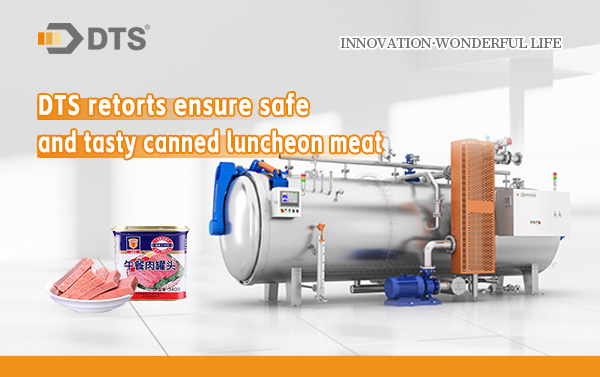
Canned luncheon meat, often seen as a popular accompaniment to hot pot and spicy dishes, has been a favorite on dining tables for years. Do you know the typical sterilization method used for canned luncheon meat?
To ensure safety and extend shelf life, canned luncheon meat usually undergoes high-temperature steam air sterilization. this method involves steam and air into the retort to heat the canned product. The cans are heated to a preset temperature and maintained at that temperature for a period of time to kill potential bacteria, Clostridium botulinum spores, and microorganisms in the canned product. This ensures the cans meet commercial sterility standards, allowing them to be stored for extended periods at room temperature.

Traditional water immersion sterilization requires the product to be soaked in high-temperature water for an extended period. This can lead to oxidation and rusting of tinplate cans, not only affecting their appearance but also raising concerns about product quality among consumers. However, The DTS steam air retort uses steam for sterilization. It employs steam as a medium and utilizes a fan to thoroughly the steam with air, eliminating cold spots in sterilization and ensuring precise temperature control inside the retort. This prevents direct contact between tinplate packaging and liquid water, effectively blocking oxidation at its source, avoiding rust on product packaging, and ensuring an attractive appearance of the packaging.
Steam air retort can not only effectively destroy microorganisms and pathogens but also preserve the taste and nutritional value of canned luncheon meat, allowing us to enjoy delicious food with peace of mind.





